
Curated by Vassia Magoula
In a combination of human and humanoid creatures, animated virtual figures and hybrid environments, the works of this section aim to transcend the conventional boundaries of representation to explore the manifold identities and new corporealities of an increasingly digitized world. The participating artists posit questions around the limitless potentialities and transformations of our bodies and identities, the numerous roles that we perform, the multiple overlapping spaces that we inhabit and the hybrid realities and corporealities that we experience. Each work provides glimpses into the ambiguous current and future realities which have yet to be mapped out or fully determined, manifesting as a celebration of fluidity, uncertainty and weirdness.
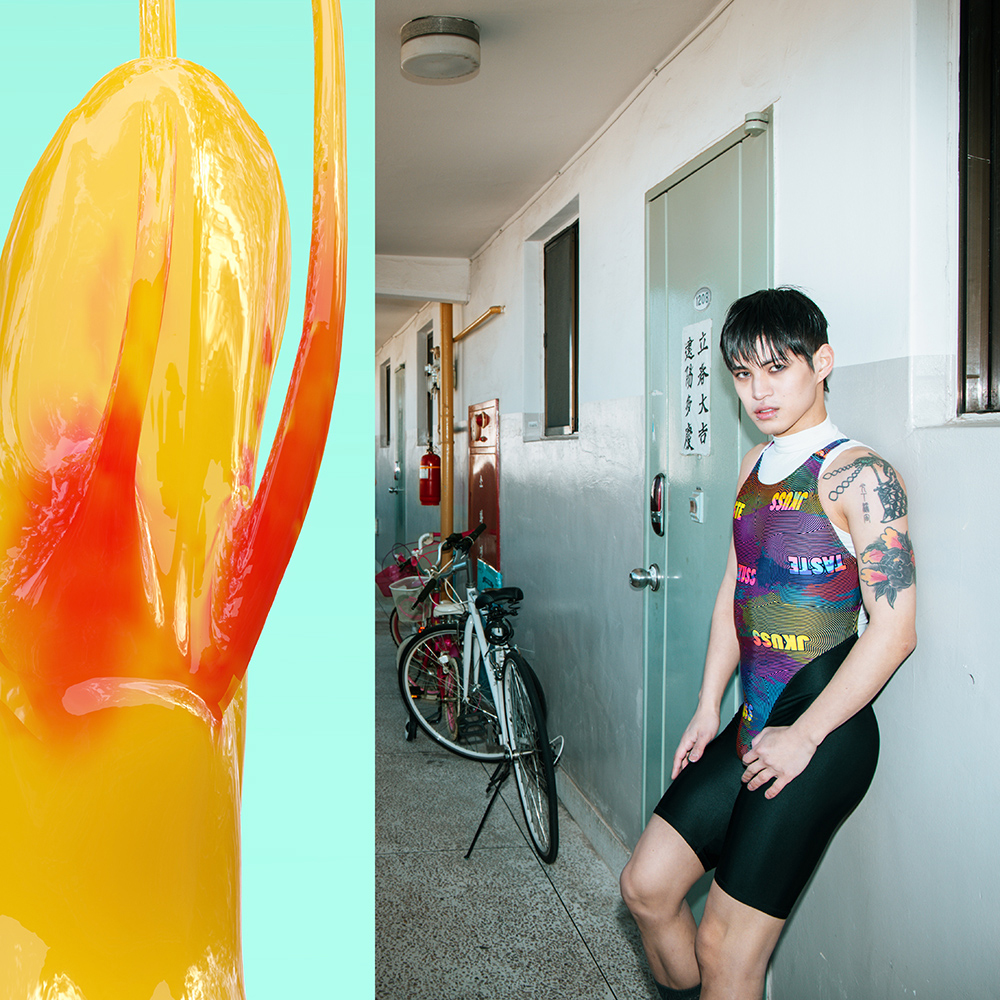
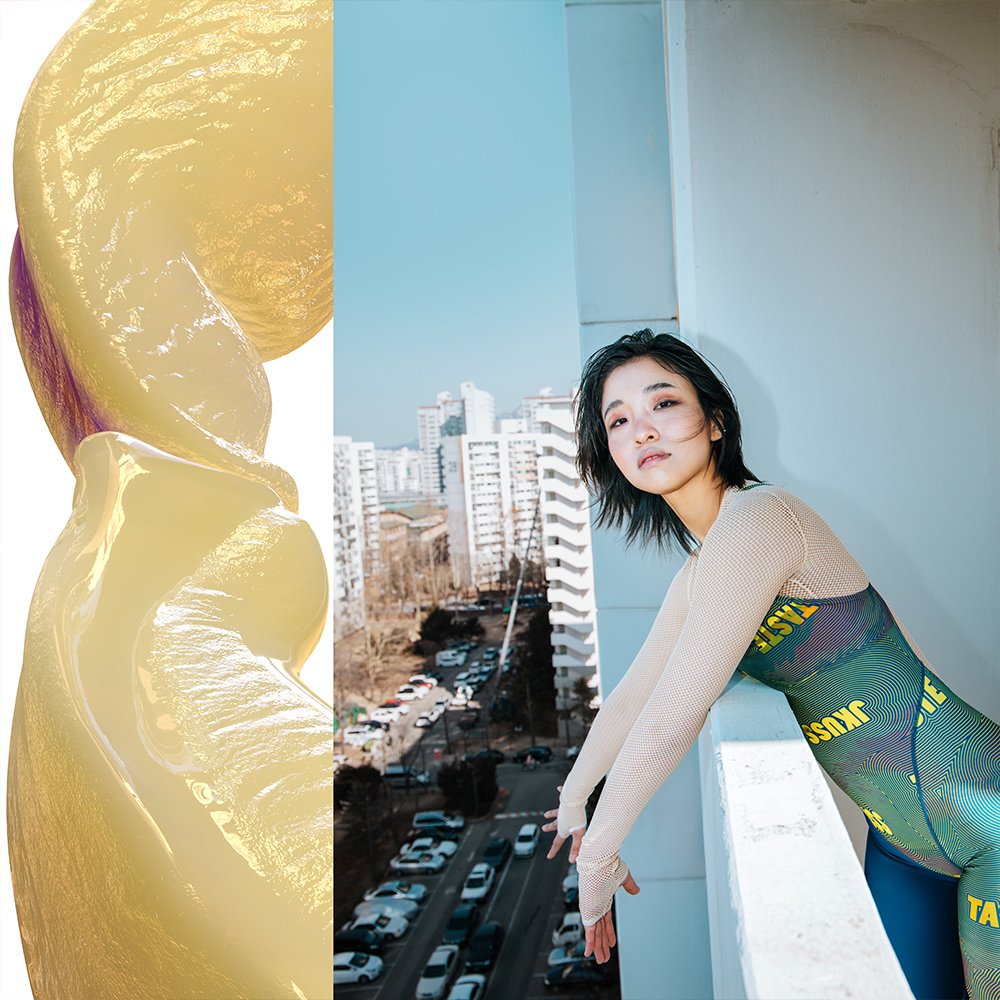
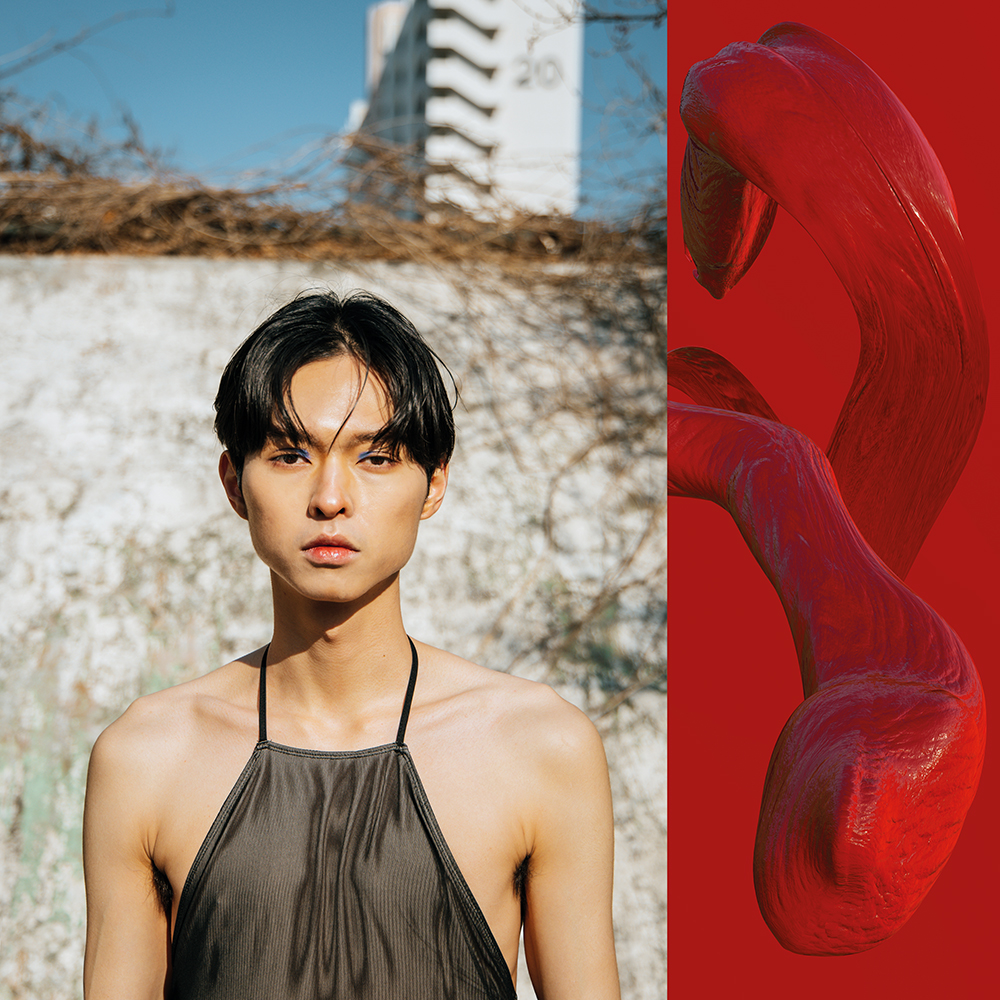
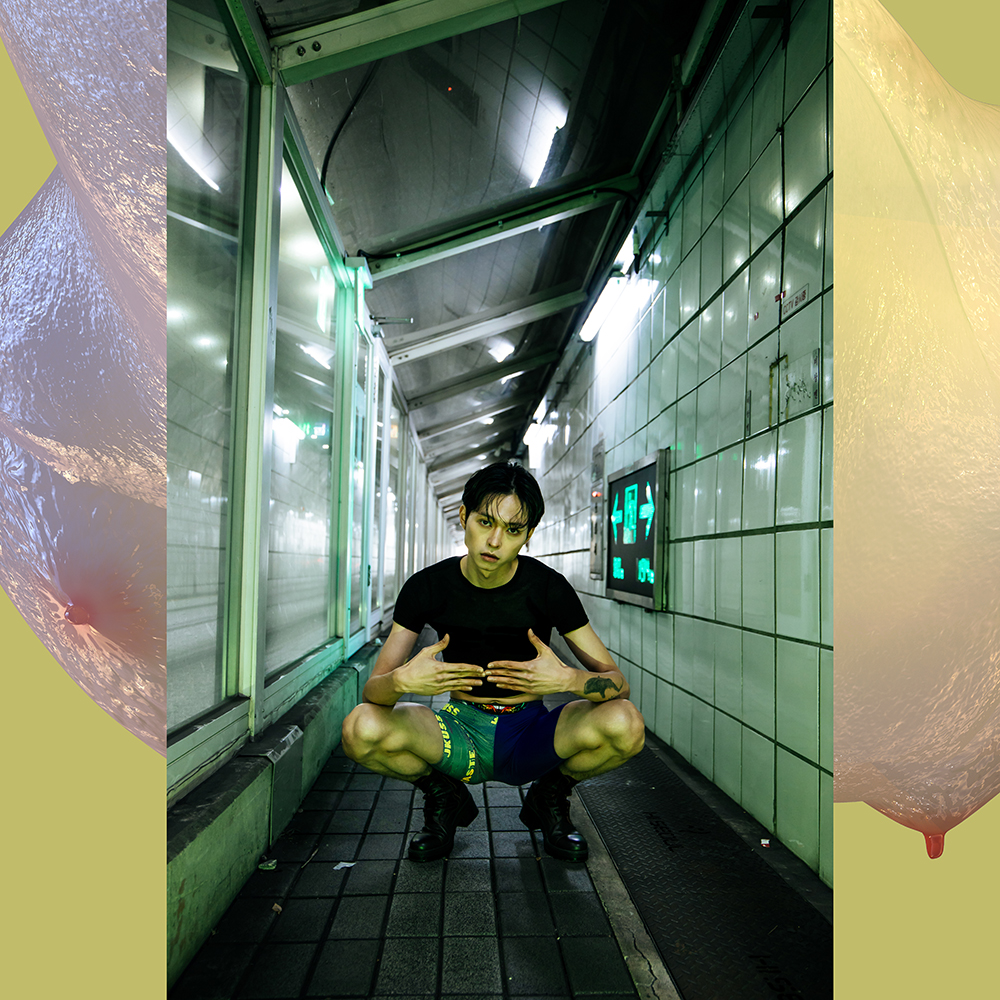
TZUSOO, My Aquarium: The Zero Sex (2020)
Creatures with ambiguous gender identities live in an aquarium set in the raw side of Seoul, where they were born. TZUSOO expresses a deep empathy for Susan Paludi’s saying that “gender is infinitely diverse and exists in the spectrum.” My Aquarium: The Zero Sex depicts youths, including TZUSOO itself, who strongly face their complex gender that lives and breathes in their biological body. Born and grown up in Seoul, a patriarchal city, the bodies of these youths have been reborn as the generations who are most strongly rejecting the dichotomous gender division. They form together an ecosystem of the aquarium with hermaphrodite creatures that makes human-oriented gender interpretation meaningless
TZUSOO, Ultra-Hygienic Exhibition (2020)
When an image reveals its intrinsic nature in the digital image, the digital alludes to newly implemented order. Ultra-Hygienic Exhibition offers as the exhibition space for My Aquarium, audiences are invited to immerse themselves in the new orders to navigate through the exhibition. Audiences join the exhibition space configured in an unconventional platform with their avatars christened with a name.
Nevertheless, they fail to render a whole body and struggle to move. Audiences also don’t recognize each other on the platform where they reside in an idiosyncratic timeframe and space. The artist repeatedly asks the audiences for their names.
Every part of the human body is elaborately designed for a distinct function, that is, all parts of the body ‘function’ in their own way. The stomach functions as a digestive system, blood cells carry the oxygen, human skin is for the protection and muscle functions to produce force and motion, and sex enables reproduction. Even if human utilizes body parts as a means of expression and pleasure in the world we live in, the original purpose of the body entails the functionality. Hence, an avatar has the ‘body of impossibility’ in virtual reality, and it is a silhouette outline consists of color data. The impalpable avatar is incapable of fulfilling a biological reproduction even with gender. Its muscle is dissociated from the bodily response, but the user’s direction key manipulates its movement instead of the avatar’s bone or muscle. Avatars mimic human cognition by which the programmed reflection is understood as a plausible ‘possibility.’ However, avatars with the virtual body from TZUSOO ‘s work explicitly abandons a veneer of ‘possibility.’
We don’t understand each other as much as we don’t know about ourselves, and the whereabouts is unknown. Being daunted by the prevalence of pandemics, the ‘impossibility’ of visual reality mirrors its lethargy, though the body in virtual space is not powerless. The audiences at Ultra-Hygienic Exhibition exhibition experience recurring failures. The failure of avatars that resist bodily function represents the resistance for normalcy. In the same context, the queer is immersed in the space in vain. The object and images of My Aquarium hover above failing avatars. TZUSOO ‘s aquarium expands into my screen and further into my body that controls the virtual body in the program.
Swimming in the virtual water tank with an abnormal body, 2021, -la, Hyunjin La
Jan Matýsek, Leviathan’s Wet Dream (2020)
Water as an individual and planetary identity. Water that is soaked in every plant, animal and every human, in all living and non-living. Not only on the basis of this fact, we are connected to everything and function as one organism. But what if the water is polluted? Intoxicated water has a hallucinatory effect on its bodies; it is a collective hallucinogen. The planet is behaving unpredictably, and so are we. Ocean levels are rising and flooding the land, the “water age” has come. Polluted water becomes a common environment and affects our minds, but also the body, which transforms after contamination. We’re hallucinating. We turn into amphibians, half terrestrial and aquatic creatures, half real and virtual. Our consciousness expands to a higher level. Are we making this ecological catastrophe to transcendent ourselves? And what about love? Transhumanist apocalypse on the horizon! Coming soon…
Video Credits: Igor Smitka (DOP), Natálie Pleváková (Sound), Marek Mrkvička (AD), Klára Mamojková (Production)
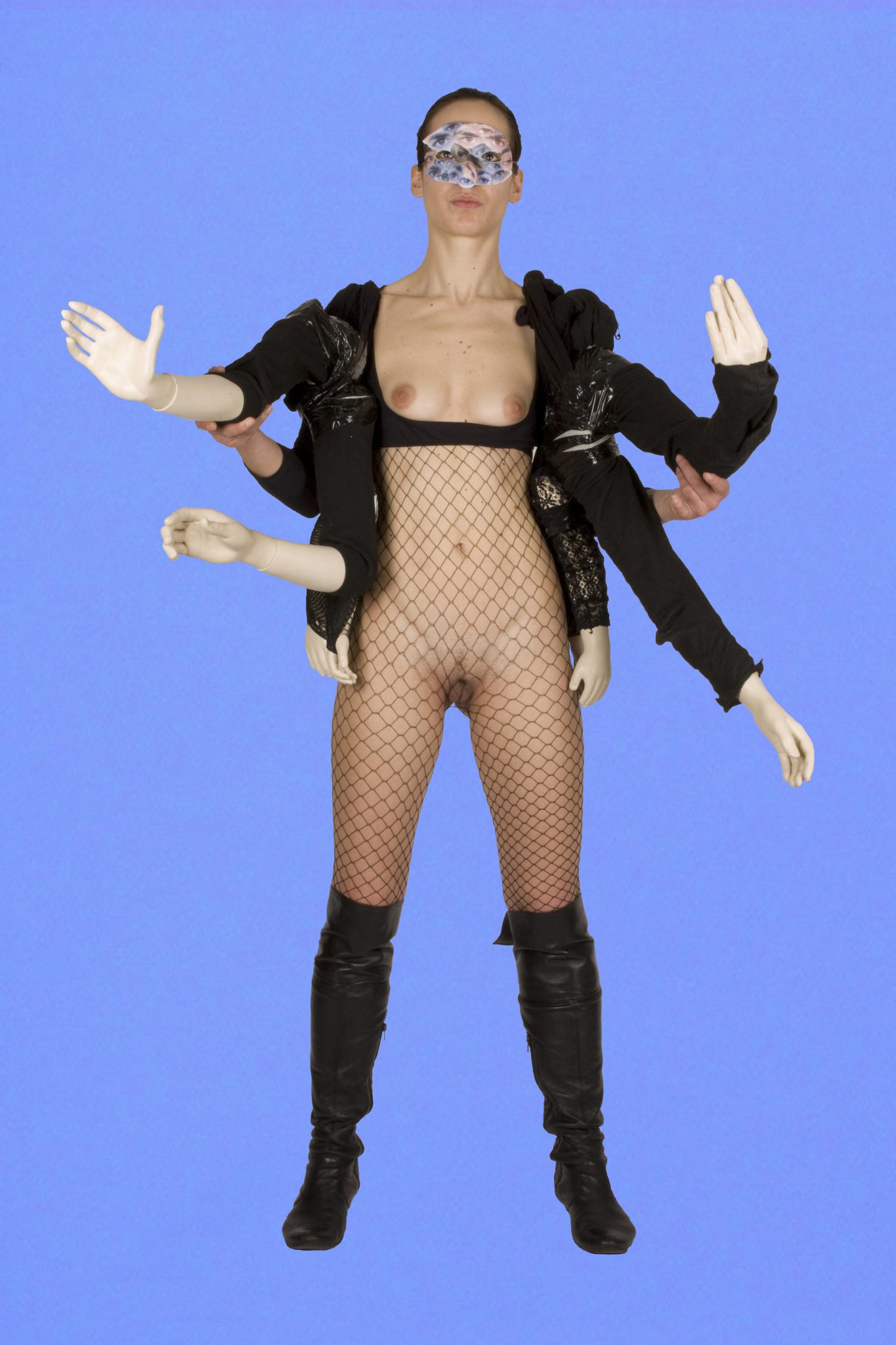
Darina Alster, Multihanded Woman (2014)
Multihanded Woman is about the inner feelings of a contemporary woman, who is charged with multiple roles and various identities performed all at once. Therefore she has developed different limbs for different duties: she has a small kid on one hand and a mobile phone on the other, while her other hands are busy cooking, writing for fundraising projects or creating a new art piece. She is expected to always be sexy, pretty and smart. She is an unknown heroine whose body is never considered enough to fulfill the expectations of its surroundings. She is often the one to blame for everything that is not perfect or for a situation that has failed. Her figure is reminiscent of the robotic Third Hand of Stelarc, though her version is a DIY one. She is actually a very strong and resilient person. The blue color of the background, which is a typical, neutral surface for screening or projection of any possible place and context, indicates that this female hero can adjust to any circumstances, numerous situations and multiple environments.
Fenia Kotsopoulou, SLIPPAGE (2020)
SLIPPAGE is an experimental video-performance in which binary representations fall apart through the hacking of the gender “code”. The use of glitch – as a means of mutiny and resistance against societal oppression of gender expression – allows the dismantling of the faces that constitute our constructed identities. Inspired by the Legacy Russell’s manifesto on Glitch Feminism according to which the glitch provokes us “to consider how we can ‘penetrate…break…puncture…tear’ the material of institution, and, by extension, the institution of the body”, in SLIPPAGE the notion of identity is in a constant flux of transformation, deconstruction, and fragmentation. As a way of resisting aligning with the canon of white heteronormativity, the emphasis is on the gap created during the process of “slipping”; of failing to grip; of unbecoming through consecutive errors. The visual output is a performative proposition towards a “malleable” self, reflected in the deformation of the face. What changes in the perception of our identities which, in their error, refuse to be recognisable, known, and named?
Christopher Matthews, Untitled: Video Portraits (2017)
Drawing from his experience in popular music and dance, in this work Matthews uses the music video format to explore its particular performativity. Untitled: Video Portraits (2017) is an ensemble of studies that engage with the music video as an apparatus that exists within the centre of pop culture. With these works the artist explores iconoclasm and pursues a critical engagement with technique and format in popular media. Whilst employing certain familiar patterns of music videos (e.g. rhythm, editing, length and address of the audience) Matthews intends to shift the focus back to the performance that is expressed within the said medium. The videos are played without sound, so that the subject, the body and its gestures, become more present; the identity of the music is therefore presented only through its embodiment. By masking the gender of the singer and placing the (white mid-30s) male body in relation to the music and its performance, Matthews aims to highlight the gender codes and the expression of sexuality.
Eremus, Turmoil (2020)
Turmoil is a short story about two entities coming close and moving away from each other. Turmoil is a dream about intimacy in the post-analog age. Turmoil is a hedonistic and self-sufficient trip between inconsistent modes of reality. Turmoil is what happens when semi-conscious holograms are set free to explore a series of digital ruins and utopias under-construction.